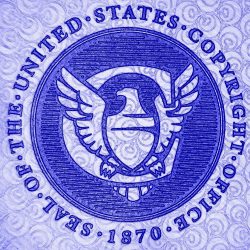Key Takeaways from the U.S. Copyright Office’s Latest Report
In January 2025, the U.S. Copyright Office released Part 2 of its comprehensive report on Copyright and Artificial Intelligence, focusing on the copyrightability of AI-generated works. This landmark report provides crucial insights into how AI law intersects with copyright protection, offering guidance for companies

The Intersection of AI Law and Copyright
As AI technology continues to advance at an unprecedented pace, questions about the copyrightability of AI-generated content have become increasingly complex. The AI industry has seen explosive growth, with global AI revenue projected to reach $900 billion by 2026. This rapid expansion has led to a surge in AI-related legal challenges, including high-profile lawsuits involving major tech companies and content creators.
The Copyright Office’s report addresses these challenges head-on, providing a framework for understanding how existing copyright law applies to works created using AI tools. This guidance comes at a critical time, as businesses across industries are integrating AI into their operations, and the art world grapples with the implications of AI-generated art and music.
Key Conclusions from the Copyright Office
The report outlines eight significant conclusions that will shape the future of AI law and copyright protection:
- Existing law is sufficient: The Copyright Office concludes that current copyright law can adequately address AI-related copyrightability issues without the need for legislative changes. This means that stakeholders in AI law can rely on established legal principles when considering the protection of AI-generated works.
- AI as a creative tool: Using AI tools to assist in the creative process does not impact copyright protection for the resulting work. This is good news for artists and innovators who incorporate AI into their workflows, as it ensures their creations remain eligible for copyright protection.
- Protection for human-authored elements: Copyright protects original expression created by human authors, even when combined with AI-generated material. This highlights the importance of human creativity in the eyes of copyright law.
- Limitations on purely AI-generated content: Works created solely by AI, or where human control over expressive elements is insufficient, are not eligible for copyright protection. This underscores the need for meaningful human input in the creative process.
- Case-by-case analysis: The sufficiency of human contributions to AI-generated outputs must be evaluated individually. This approach recognizes the diverse ways in which humans and AI can collaborate in the creative process.
- Prompts alone are insufficient: Based on current technology, merely providing prompts to an AI system does not constitute enough control to claim authorship. This is a crucial consideration for those relying heavily on AI-generated content.
- Protection for human-authored elements in AI outputs: Copyright extends to human-authored works perceptible in AI-generated outputs, as well as creative selection, coordination, arrangement, or modifications of such outputs. This provides a pathway for copyright protection in AI-assisted works.
- No additional protection needed: The Copyright Office does not recommend additional copyright or sui generis protection for AI-generated content at this time. This stance emphasizes the adequacy of existing copyright law in addressing AI-related issues.
Impact on Business, Technology, and the Art World
The rapid advancement of AI technology has had far-reaching effects across various sectors:
Business and Technology
Businesses are increasingly leveraging AI to streamline operations, enhance customer experiences, and develop innovative products. However, this integration raises complex questions about intellectual property rights and liability. Recent lawsuits, such as the case involving GitHub’s Copilot AI tool, highlight the potential legal risks associated with AI-generated content and training data.
The Art World
AI-generated art has taken the creative world by storm, with some pieces selling for millions of dollars at prestigious auction houses. This has sparked debates about the nature of creativity and the role of human artists in an AI-driven future. The Copyright Office’s guidance on human authorship and AI assistance provides a crucial framework for artists and galleries navigating this new terrain.
For Companies and Entrepreneurs
Companies leveraging AI technology should ensure that their processes involve meaningful human creativity and curation. While AI can be a powerful tool, relying solely on AI-generated content may limit copyright protection options. Businesses should document human contributions to AI-assisted projects and consider implementing workflows that clearly demonstrate human authorship and creative control.
For Artists and Creators
Artists using AI tools can take comfort in knowing that their works remain eligible for copyright protection, provided they maintain sufficient creative control. However, they should be mindful of the limitations on protecting purely AI-generated content. Artists should focus on using AI as a complementary tool rather than a replacement for human creativity.
For Innovators and Technologists
Those developing AI technologies should consider how their tools can facilitate human creativity rather than replace it entirely. There may be opportunities to create AI systems that better support collaborative human-AI creation processes while respecting the boundaries of copyright law.
The Growing Role of AI Law Firms and AI Lawyers
As AI continues to reshape creative industries, AI law firms and lawyers specializing in AI law have taken on an increasingly crucial role in navigating the complex legal landscape. These experts in AI law are at the forefront of shaping policy, providing guidance, and helping clients navigate the intricate intersection of technology and copyright. Seeking the advice of lawyers well-versed in AI law has become essential for companies, entrepreneurs, and creators looking to leverage AI technologies while staying compliant with evolving legal standards.
Lawyers knowledgable in AI law offer invaluable insights into the nuances of copyright protection for AI-generated works, potential liability issues, and strategies for safeguarding intellectual property rights in the age of artificial intelligence. Their counsel extends beyond just understanding current regulations; they are often involved in shaping future policies and anticipating legal challenges that may arise as AI technology advances.
While the U.S. Copyright Office continues to play a vital role through its AI initiative, hosting educational webinars, engaging with stakeholders, and updating registration practices, AI lawyers provide a critical complement to these efforts. These legal professionals can offer tailored advice and strategies specific to a client’s unique situation, helping them navigate the rapidly evolving field of AI law with confidence and foresight.
Protecting Your Work in the Age of AI Law
Given the Copyright Office’s guidance, here are some strategies for protecting your creative works in the context of AI law, with a strong emphasis on seeking professional assistance:
- Document your creative process: Keep detailed records of how you use AI tools and the specific human contributions to your work. An AI lawyer can advise on the best documentation practices to strengthen your copyright claims.
- Emphasize human creativity: Ensure that your use of AI involves significant human direction, curation, and modification of AI-generated elements. AI law firms can help you structure your creative process to maximize copyright protection.
- Understand the limitations: Be aware that purely AI-generated content is not eligible for copyright protection, and plan your creative and business strategies accordingly. An AI lawyer can help you navigate these limitations and develop strategies to protect your intellectual property.
- Seek expert legal advice: Given the case-by-case nature of these determinations, it is crucial to consult with an attorney specializing in AI law and copyright to assess your specific situation. AI law firms have the expertise to provide tailored guidance and help you navigate the complex intersection of AI and copyright law.
- Stay informed with professional help: Keep abreast of developments in AI law and copyright, as the Copyright Office will continue to monitor this rapidly evolving field. AI lawyers can provide regular updates and insights on how changes in the legal landscape may affect your work.
- Develop a comprehensive AI strategy:Contact anAI law firmto create a holistic approach to using AI in your creative process while maximizing copyright protection. This may include crafting custom agreements, developing internal policies, and implementing best practices.
- Conduct AI-related audits: Engage AI lawyers to perform regular audits of your AI-assisted creative processes to ensure ongoing compliance with copyright laws and identify potential risks or opportunities.
- Explore additional protections: AI law firms can advise on complementary forms of protection, such as patents or trade secrets, that may be applicable to your AI-related innovations.
By partnering with experienced AI lawyers and law firms, you can navigate the complex landscape of AI law and copyright with confidence, ensuring that your creative works receive the strongest possible protection in this rapidly evolving field
Conclusion
The Copyright Office’s report provides valuable clarity on the intersection of AI law and copyright protection. By understanding and applying these principles, companies, entrepreneurs, artists, and innovators can navigate the complex landscape of AI-assisted creation while safeguarding their intellectual property rights.
As AI technology continues to advance, it’s crucial for all stakeholders to stay informed about developments in AI law and adapt their practices accordingly. By striking the right balance between leveraging AI capabilities and maintaining human authorship, creators can continue to innovate while ensuring their works receive the copyright protection they deserve.
